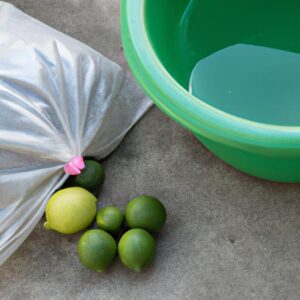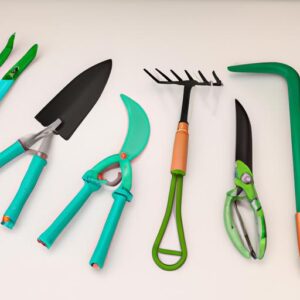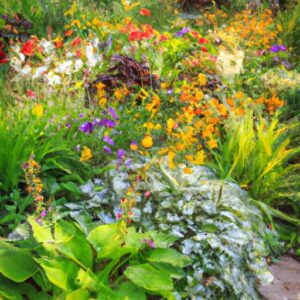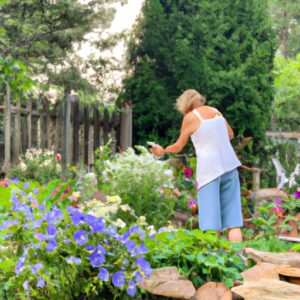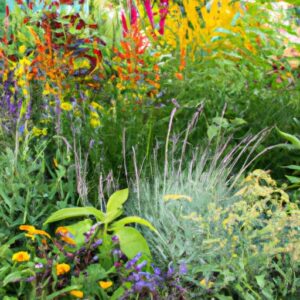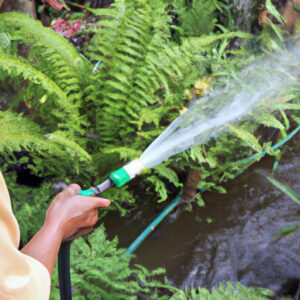Gardening can be a rewarding and fulfilling hobby, but have you ever wondered why some plants thrive effortlessly in certain areas while struggling in others? The answer lies in understanding your gardening zone. By determining which gardening zone you are in, you can unlock the secrets to successful plant selection and care. In this article, we will explore the importance of knowing your gardening zone and how it directly influences your gardening experience.
A. Importance of Knowing Your Gardening Zone
Imagine embarking on a journey without a map or GPS. You might find yourself lost, unsure of the right path to take. Similarly, when it comes to gardening, not knowing your gardening zone can lead to confusion and disappointment. Your gardening zone provides vital information about the climate, temperature range, frost dates, and other factors specific to your area. Armed with this knowledge, you can make informed decisions about which plants are best suited for your garden.
Understanding your gardening zone is particularly crucial because it helps you avoid unnecessary setbacks. Different plants have specific temperature and weather requirements to thrive. By knowing your gardening zone, you can select plants that are adapted to your local conditions, increasing the chances of success. Whether you are a beginner or an experienced gardener, aligning your plant choices with your gardening zone can save you time, effort, and resources.
B. How Gardening Zones Affect Plant Selection and Care
Gardening zones act as a guideline for selecting plants that can withstand the climate and environmental conditions of a particular region. Each zone is characterized by its unique temperature range, frost dates, and rainfall patterns. For instance, a plant suitable for a warm and humid zone may struggle to survive in a cold and dry zone.
Knowing your gardening zone empowers you to make intelligent choices about which plants to grow. It ensures that you select varieties that are well-suited to your specific microclimate, resulting in healthier and more productive plants. Additionally, understanding your gardening zone helps you anticipate potential challenges, such as pests or diseases common in your area, and take proactive measures to protect your garden.
In the upcoming sections, we will delve deeper into understanding gardening zones, identifying your specific zone, and learning valuable gardening tips tailored to each zone. So, let’s embark on this gardening journey together and uncover the secrets of optimizing plant selection and care based on your gardening zone.
Understanding Gardening Zones
Gardening zones serve as geographical indicators that help gardeners determine the specific climate conditions in their region. By understanding gardening zones, you can gain valuable insights into the unique characteristics of your area. Let’s explore further to unravel the concept of gardening zones and how they play a significant role in successful gardening.
A. Definition and Purpose of Gardening Zones
Gardening zones, also known as hardiness zones, are divided regions that categorize areas based on their average annual minimum temperatures. These zones provide a framework for gardeners to understand the climatic conditions specific to their location. The United States Department of Agriculture (USDA) developed the widely used USDA Hardiness Zone Map, which classifies zones based on temperature ranges. Other countries may have their own zone maps tailored to their unique climates.
The purpose of gardening zones is to aid gardeners in selecting plants that can withstand the temperature extremes of their region. Each zone represents a range of temperatures, allowing gardeners to identify which plants are best suited for their area. By matching plants to their appropriate zone, you can ensure that they can tolerate the lowest winter temperatures in your region, increasing their chances of survival and thriving.
B. Factors That Determine Gardening Zones
Several factors contribute to determining gardening zones, extending beyond just minimum winter temperatures. While temperature is a primary consideration, other elements that influence gardening zones include humidity, rainfall, wind patterns, elevation, and proximity to bodies of water. These factors collectively impact the microclimate of an area, influencing the types of plants that can thrive.
The USDA Hardiness Zone Map takes into account historical climate data, including temperature records, to establish the boundaries of each zone. These boundaries are typically defined by a 10°F (5.6°C) difference in minimum winter temperatures between adjacent zones. As a result, neighboring zones may experience slight variations in growing conditions, necessitating careful plant selection based on specific local conditions.
C. Importance of Climate in Determining Gardening Zones
Climate plays a pivotal role in determining gardening zones as it directly affects plant growth and survival. Different plants have specific temperature and climate requirements to thrive. Understanding the climate of your gardening zone helps you choose plants that can endure the conditions in your area.
The climate in your gardening zone affects various aspects of gardening, including the length of your growing season, the types of plants you can grow, and the care they require. It influences the choice of annuals, perennials, vegetables, and trees that can flourish in your region. By considering the climate factors of your gardening zone, such as temperature range, frost dates, and rainfall patterns, you can tailor your gardening practices to optimize plant health and productivity.
In the next section, we will dive into the process of identifying your specific gardening zone, enabling you to make informed decisions about the plants that will thrive in your unique climate. Let’s continue our exploration of gardening zones and unlock the secrets to successful gardening in your area.
Identifying Your Gardening Zone
Determining your gardening zone is the first step towards optimizing your plant selection and care. Luckily, there are several methods you can employ to identify which zone you belong to. Let’s explore these methods in detail:
A. Researching Gardening Zone Maps and Resources
One of the simplest ways to identify your gardening zone is by referring to gardening zone maps and resources. These maps divide different regions based on their specific climate characteristics. You can find such maps in gardening books, magazines, or online resources dedicated to gardening. Look for maps that provide detailed information about temperature ranges, frost dates, and other relevant factors specific to your area.
B. Using Online Tools and Websites to Determine Your Gardening Zone
In today’s digital age, the internet offers a wealth of resources at your fingertips. Numerous online tools and websites provide gardening zone calculators or interactive maps that can help you determine your gardening zone with ease. By inputting your location or zip code, these tools can provide accurate and up-to-date information about your specific zone. Some websites even offer additional features, such as plant recommendations and gardening advice tailored to your zone.
C. Consulting Local Agricultural Extension Offices for Accurate Information
For the most accurate and reliable information about your gardening zone, consider reaching out to your local agricultural extension office. These offices are equipped with experts who possess in-depth knowledge about the specific conditions in your area. They can provide you with precise details about your gardening zone, including any microclimates or unique factors that may impact plant growth. Contacting your local agricultural extension office not only ensures accurate information but also allows you to tap into a wealth of expertise and guidance for successful gardening in your zone.
By utilizing these methods, you can confidently identify your gardening zone and lay the foundation for a thriving garden. In the following sections, we will explore the various factors that affect gardening zones and provide you with valuable gardening tips tailored to your specific zone. So, let’s dive deeper into the world of gardening zones and discover how they shape our gardening experiences.
Factors Affecting Gardening Zones
Gardening zones are not solely determined by geographical boundaries; they are influenced by several factors that shape the unique characteristics of each zone. Understanding these factors will provide valuable insights into the conditions that affect plant growth and allow you to make informed decisions for your garden.
A. Temperature Range and Frost Dates
Temperature plays a crucial role in determining gardening zones. The range of temperatures experienced throughout the year helps classify areas into specific zones. Frost dates, in particular, are essential for gardeners to be aware of, as they indicate the average dates of the first and last frosts in a given area.
Knowing your frost dates allows you to plan your planting schedule accordingly. It helps you determine when it is safe to plant frost-sensitive plants and when to provide protection during colder periods. By aligning your planting activities with the expected temperature range and frost dates of your gardening zone, you can maximize the chances of success for your plants.
B. Rainfall and Precipitation Patterns
Rainfall and precipitation patterns greatly influence gardening zones. The amount and distribution of rainfall in an area impact the availability of water for plants and contribute to the overall climate conditions. Some regions receive abundant rainfall, while others may experience more arid conditions.
Understanding the rainfall and precipitation patterns in your gardening zone is crucial for proper irrigation and plant care. It allows you to select plants that are adapted to the moisture levels in your area, ensuring they receive the necessary water to thrive. Additionally, being aware of dry spells or heavy rainfall periods helps you adjust your watering schedule and implement appropriate drainage systems in your garden.
C. Soil Type and Fertility
Soil type and fertility vary from one gardening zone to another, influencing the types of plants that can grow successfully. Different soil compositions, such as sandy, clay, or loamy soils, have distinct drainage capabilities and nutrient-holding capacities.
Knowing your soil type enables you to choose plants that are well-suited to its characteristics. Some plants thrive in well-drained sandy soils, while others prefer the moisture-retention properties of clay soils. Understanding the fertility of your soil also helps you determine the need for additional amendments or fertilizers to provide optimal conditions for your plants’ growth.
By considering the interplay of temperature range, frost dates, rainfall patterns, and soil characteristics, you can gain a comprehensive understanding of the factors that shape your gardening zone. Armed with this knowledge, you will be better equipped to select and care for plants that flourish in your specific environment. In the following section, we will explore gardening tips tailored to each gardening zone, helping you make the most of your gardening endeavors.
Gardening Tips for Each Zone
Gardening is an art that is deeply influenced by the unique characteristics of each gardening zone. To help you navigate through your gardening journey, here are some valuable tips tailored to each zone that will optimize your plant selection and care.
A. Zone-specific Plant Selection and Care Guidelines
Understanding your gardening zone allows you to choose plants that are well-suited to the conditions of your area. Here are some guidelines to consider when selecting and caring for plants in each zone:
-
Zone 1 and 2: These zones experience extremely cold temperatures, making it challenging for many plants to survive. Opt for cold-hardy plants such as conifers, hardy shrubs, and perennials. Protect your plants from frost by using mulch and providing adequate shelter.
-
Zone 3 and 4: These zones have a moderate climate with cold winters. Consider planting fruit trees, roses, and perennials that can withstand frost. Mulching and proper watering techniques are essential to protect plants during harsh winters.
-
Zone 5 and 6: These zones have a wide range of plants that can thrive. Choose a variety of vegetables, annuals, perennials, and shrubs. Be mindful of temperature fluctuations and provide adequate water and sun exposure for optimal growth.
-
Zone 7 and 8: These zones have mild winters and hot summers. Focus on heat-tolerant plants like succulents, citrus trees, and heat-loving annuals. Mulching and regular watering are essential during dry spells.
B. Recommended Plants for Each Gardening Zone
Each gardening zone has a unique selection of plants that are well-adapted to its climate. Here are some recommended plants for each gardening zone:
-
Zone 1 and 2: Consider planting hardy perennials like Siberian iris, Arctic poppy, and alpine asters. Cold-tolerant vegetables like kale, carrots, and potatoes also thrive in these zones.
-
Zone 3 and 4: Opt for plants like peonies, daylilies, and hostas that can withstand colder temperatures. For vegetables, try growing tomatoes, lettuce, and peas.
-
Zone 5 and 6: Embrace a wide range of plants including roses, lavender, and daisies. Popular vegetables for these zones include tomatoes, cucumbers, and beans.
-
Zone 7 and 8: Consider planting heat-loving plants such as bougainvillea, agapanthus, and hibiscus. Vegetables like peppers, eggplants, and okra thrive in these zones.
C. Dealing with Challenges Specific to Your Gardening Zone
Each gardening zone presents its own set of challenges, such as extreme temperatures, pests, or soil conditions. Here are some tips to overcome zone-specific challenges:
-
Extreme Cold: Use frost protection methods like row covers, cloches, or cold frames to shield plants from freezing temperatures.
-
Drought: Practice water conservation techniques like mulching, proper watering schedules, and choosing drought-tolerant plants.
-
Pests and Diseases: Identify common pests and diseases in your area and implement appropriate preventive measures like crop rotation, companion planting, or organic pest control methods.
By following these zone-specific guidelines, selecting appropriate plants, and addressing challenges head-on, you can create a thriving and beautiful garden that harmonizes with your gardening zone. Remember, experimenting and learning from experience is all part of the joy of gardening!
Conclusion
Knowing your gardening zone is the key to unlocking the full potential of your garden. By understanding the unique characteristics of your zone, you can confidently select plants that will thrive in your specific climate and environmental conditions. This knowledge allows you to make informed decisions about which plants to grow, saving you time, effort, and resources.
By aligning your plant choices with your gardening zone, you can ensure the health and productivity of your garden. Each zone has its own temperature range, frost dates, and rainfall patterns, which directly impact the success of your plants. By selecting varieties that are well-suited to your zone, you increase the chances of vibrant growth and bountiful harvests.
Furthermore, understanding your gardening zone helps you anticipate and tackle challenges specific to your area. Whether it’s protecting your plants from extreme temperatures, adjusting watering schedules to match rainfall patterns, or preparing for common pests and diseases, being aware of your zone empowers you to take proactive measures and nurture your garden with care.
So, take the time to identify your gardening zone. Research gardening zone maps, consult online tools, and reach out to local agricultural extension offices for accurate information. Once you know your zone, explore the recommended plant selections and care guidelines tailored to your specific area.
Remember, your gardening zone is like a secret code that unlocks the beauty and success of your garden. Embrace it, and let your garden flourish with the knowledge and understanding of which gardening zone you are in. Happy gardening!
